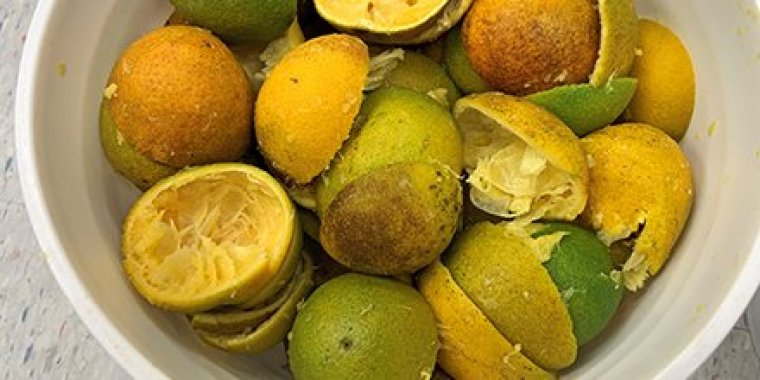| Science |
A High-Quality Pectin That “Gels With” Low Sugar Products
U.S. Department of Agriculture (USDA)’s Agricultural Research Service (ARS) scientists developed a high quality and inexpensive pectin that can successfully gel in low sugar products and still be scalable for commercial production.

Orange peels used to make pectin. Photo: Wei Zhao/ARS
Pectin, a soluble fiber used mainly for gelling food products like jams and jellies, is naturally found in fruits and vegetables. Most commercial pectins are from citrus fruit peels and are extracted into a powder to act as a gelling agent in foods.
“Most commercially-available pectins successfully gel only when combined with high sugar products and acid,” said Wei Zhao, a research chemist from the U.S. Horticultural Research Laboratory in Fort Pierce, Florida.
“For people seeking low sugar foods, most commercial pectins will not gel properly since a lot of sugar is needed for the gelling process. There are some commercial pectins that can gel in low sugar foods, but these alternatives tend to be low quality, are quite expensive to produce, and may contain undesirable residues.”
In a recent study, Zhao and other ARS researchers found that they can pre-treat a fresh orange peel in a simple high-pressure processing (HPP) treatment and then extract pectin from that orange peel using a standard commercial method.
The extracted pectin has desirable structural properties needed for gelling low sugar products without leaving undesirable residues.
According to Zhao, the global market for pectin recently surpassed one billion dollars per year and is expected to reach over two billion dollars by 2025.
The increasing demand for low sugar food products makes Zhao and her team’s pectin a desirable option for consumers.
“Our research findings reveal the great potential of producing low-cost, high-quality pectins with increased gelling capacity by adding a simple HPP pre-treatment of fresh source material for pectin extraction,” said Zhao.
In addition to the U.S. Horticultural Research Laboratory, researchers from the ARS Western Regional Research Center in Albany, California, and ARS Eastern Regional Research Center in Wyndmoor, Pennsylvania, collaborated in the study.
YOU MAY ALSO LIKE





